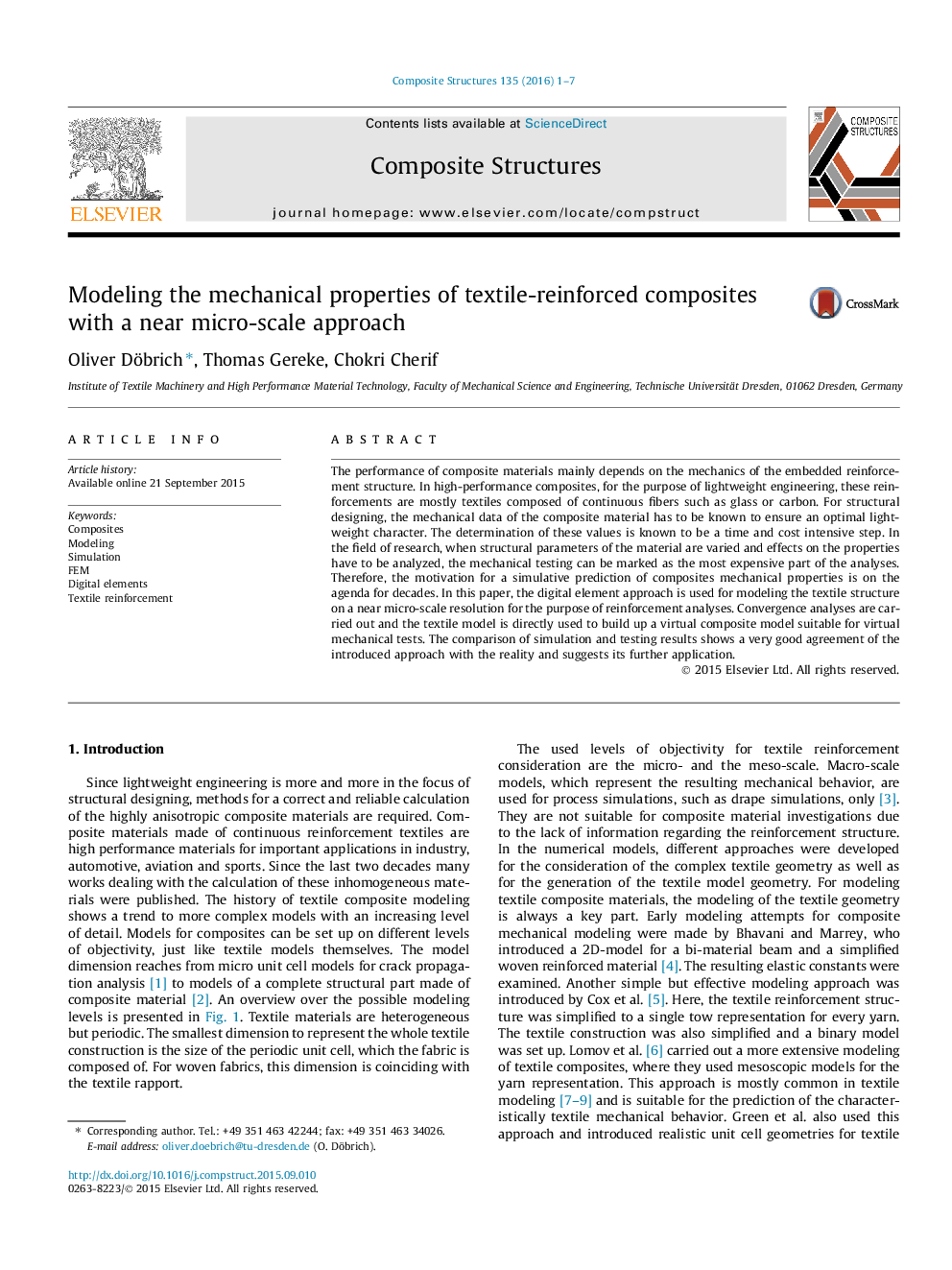| Article ID | Journal | Published Year | Pages | File Type |
|---|---|---|---|---|
| 251161 | Composite Structures | 2016 | 7 Pages |
The performance of composite materials mainly depends on the mechanics of the embedded reinforcement structure. In high-performance composites, for the purpose of lightweight engineering, these reinforcements are mostly textiles composed of continuous fibers such as glass or carbon. For structural designing, the mechanical data of the composite material has to be known to ensure an optimal lightweight character. The determination of these values is known to be a time and cost intensive step. In the field of research, when structural parameters of the material are varied and effects on the properties have to be analyzed, the mechanical testing can be marked as the most expensive part of the analyses. Therefore, the motivation for a simulative prediction of composites mechanical properties is on the agenda for decades. In this paper, the digital element approach is used for modeling the textile structure on a near micro-scale resolution for the purpose of reinforcement analyses. Convergence analyses are carried out and the textile model is directly used to build up a virtual composite model suitable for virtual mechanical tests. The comparison of simulation and testing results shows a very good agreement of the introduced approach with the reality and suggests its further application.
